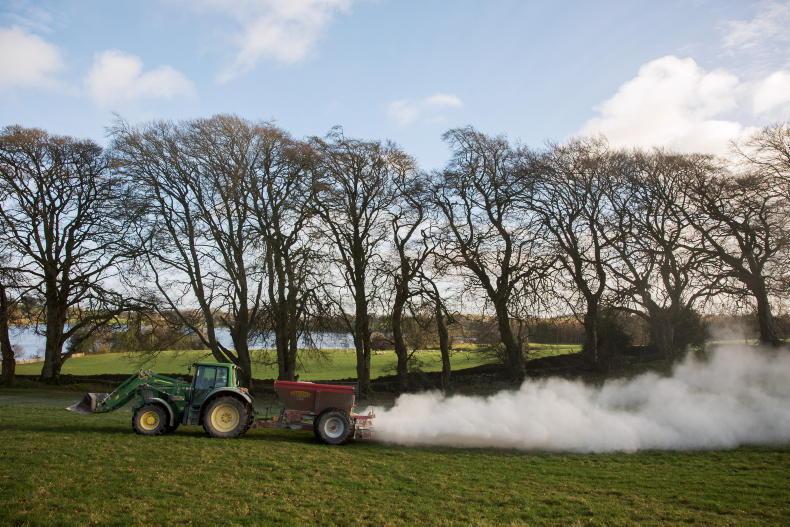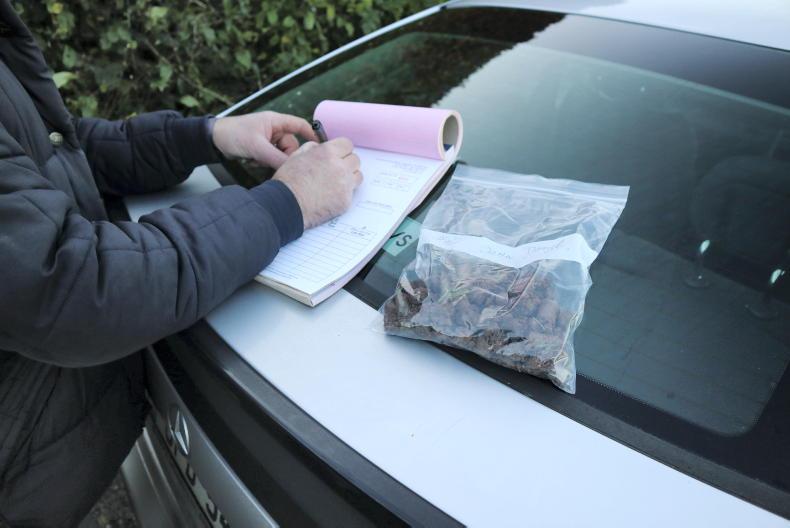Soil fertility is vital to the success of any grass-based system.
The best way to analyse soil fertility is to take soil samples.
When soil sampling, the focus is on soil phosphorous (P) index, soil potassium (K) index and the soil pH.
P & K
Now is the ideal time to soil sample because it must be done three months after the last application of P or K, either in the form of chemical or organic fertiliser.
As the closed period for chemical P was 15 September and the closed period for slurry spreading was 15 October, it has been almost three months since organic P or K has been spread.
There is no closed period for K applications. If you have spread chemical K within the last three months, doing a soil sample now could give a false high reading for the K index of the soil.
The target for both P and K is index 3. Soils in both index 1 and 2 require extra P and K to build to index 3. This extra P and K is on top of the P and K required to grow the grass that year, which is known as the maintenance figure.
The maintenance figure is based on the tonnes of grass dry matter grown in the paddock for the year.
Soil pH
The target pH of the soil is 6.3. The results from the soil sample will show the soil pH, but also the tonnes per ha of lime required to get the soil to optimum pH.
The maximum amount of lime that should be spread at one application is 2.5t/acre. If the paddock requires more than this, skip a year and apply the balance the following year.

There is no closed period for spreading lime to correct soil pH.
Lime can be applied at any time of the year as long as the ground can be travelled.
2022 fertiliser plan
You can’t manage what you don’t measure is a phrase often used in many aspects of agriculture. It is particularly significant in the case of soil sampling.
With high prices and supply issues for fertiliser expected in 2022, it’s more important now than ever to be aware of what nutrients each paddock requires.
Firstly, soils at the wrong pH will not perform to their full potential and you will not get the full response to fertiliser applications.
Lime is one product that has not changed in price over the years and when discussed among the participants in this year’s Irish Farmers Journal grassland management courses, it ranged in price from €23/t spread to €26/t spread across the country.
Knowing the soil index for P and K can allow you to come up with an accurate fertiliser plan, which will help target compound fertilisers and slurry on low-index soils.
Taking soil samples
When taking soil samples, they must be taken in a W shape across the paddock. This allows for a good representation of the field in the sample. Avoid gateways, water troughs, wet areas or feeding areas.

Labelling soil samples correctly is very important.
Using a soil core, you should take 20 cores, 10cm deep and mix the sample before filling the sample box/bag.
It is advised to take one sample at least every 4ha, but, in recent years, farmers have started to sample each paddock individually. This again helps to target fertiliser and slurry and, in turn, make better use of expensive fertiliser.
Soil fertility is vital to the success of any grass-based system.
The best way to analyse soil fertility is to take soil samples.
When soil sampling, the focus is on soil phosphorous (P) index, soil potassium (K) index and the soil pH.
P & K
Now is the ideal time to soil sample because it must be done three months after the last application of P or K, either in the form of chemical or organic fertiliser.
As the closed period for chemical P was 15 September and the closed period for slurry spreading was 15 October, it has been almost three months since organic P or K has been spread.
There is no closed period for K applications. If you have spread chemical K within the last three months, doing a soil sample now could give a false high reading for the K index of the soil.
The target for both P and K is index 3. Soils in both index 1 and 2 require extra P and K to build to index 3. This extra P and K is on top of the P and K required to grow the grass that year, which is known as the maintenance figure.
The maintenance figure is based on the tonnes of grass dry matter grown in the paddock for the year.
Soil pH
The target pH of the soil is 6.3. The results from the soil sample will show the soil pH, but also the tonnes per ha of lime required to get the soil to optimum pH.
The maximum amount of lime that should be spread at one application is 2.5t/acre. If the paddock requires more than this, skip a year and apply the balance the following year.

There is no closed period for spreading lime to correct soil pH.
Lime can be applied at any time of the year as long as the ground can be travelled.
2022 fertiliser plan
You can’t manage what you don’t measure is a phrase often used in many aspects of agriculture. It is particularly significant in the case of soil sampling.
With high prices and supply issues for fertiliser expected in 2022, it’s more important now than ever to be aware of what nutrients each paddock requires.
Firstly, soils at the wrong pH will not perform to their full potential and you will not get the full response to fertiliser applications.
Lime is one product that has not changed in price over the years and when discussed among the participants in this year’s Irish Farmers Journal grassland management courses, it ranged in price from €23/t spread to €26/t spread across the country.
Knowing the soil index for P and K can allow you to come up with an accurate fertiliser plan, which will help target compound fertilisers and slurry on low-index soils.
Taking soil samples
When taking soil samples, they must be taken in a W shape across the paddock. This allows for a good representation of the field in the sample. Avoid gateways, water troughs, wet areas or feeding areas.

Labelling soil samples correctly is very important.
Using a soil core, you should take 20 cores, 10cm deep and mix the sample before filling the sample box/bag.
It is advised to take one sample at least every 4ha, but, in recent years, farmers have started to sample each paddock individually. This again helps to target fertiliser and slurry and, in turn, make better use of expensive fertiliser.








 This is a subscriber-only article
This is a subscriber-only article










SHARING OPTIONS: